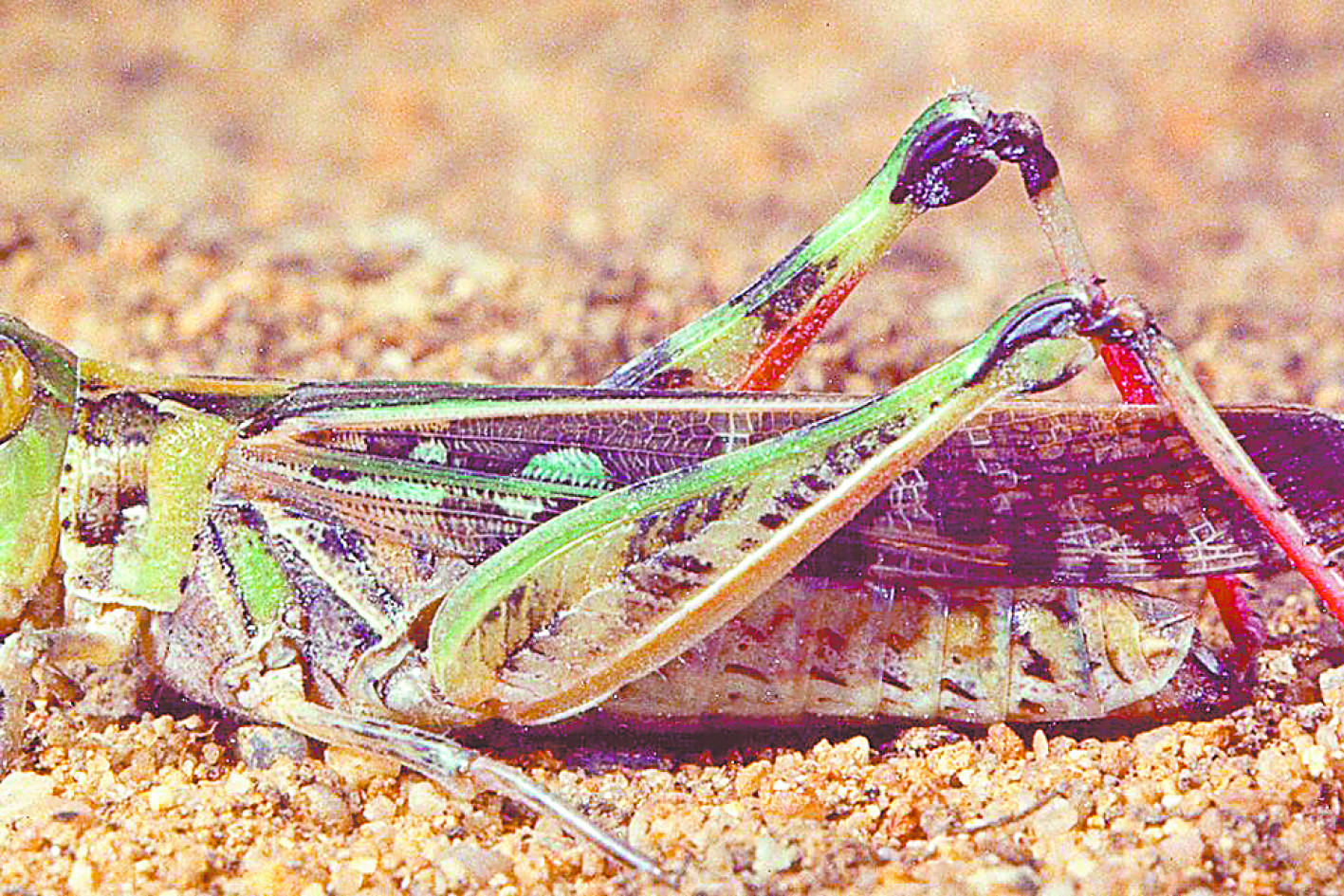General News
28 March, 2025
Australian plaque locust swarms migrate from region
Recent storms have created the right conditions for Australian plaque locust swarms to migrate out of the Central West, a relief for local landholders.

Central West Local Land Services (CWLLS) Senior Biosecurity Officer, Rhett Robinson has reported that, while Australian plaque locusts were a major concern as little as two weeks ago, the immediate threat has subsided.
A social media post in late February by the group stated that locusts have been identified in our region.
The post listed key activity locations as including Ivanhoe, Tottenham, Warren, Quambone, Coonamble, and Goorianawa (between Coonabarabran and Coonamble and near Baradine).
It was expected locusts would start laying eggs in the coming weeks, with new hatchings likely from late February to early March.
However, in an interview on March 6, Mr Robinson reported a positive change in the situation.
“After a series of storm fronts that went through here two to three weeks ago,” Mr Robinson said. “The locusts have gotten on those fronts and departed.”
Mr Robinson said CWLLS isn’t sure if the locusts have left as one group on those fronts, or whether they have left in different times, or where they have moved too.
The good news, he said, is that they have left the Central West.
“There are still scattered ones there, but not in any density that we need to worry about,” Mr Robinson said.
“It’s a relief that they have gone. It would be nice to know where they have gone too.”
The locust swarms came into the Central West in mid-December, laying eggs and then moving on.
What CWLLS was seeing in the first few months of this year, was the result of those locust eggs hatching and then getting on the wing.
CWLLS were receiving reports from farmers of locust nymphs in January, with chemicals being sent to farmers to control the locusts.
Then there was a period of around five weeks into February where they remained as nymphs on the ground before starting to swarm mid-February.
“Those swarms were quite dense,” he said.
Mr Robinson said CWLLS knew the locusts had disappeared when landholders said they were gone in follow-up calls.
The Australian Plaque Locust Commission (APLC) also did a run-through and reported that where they had found locusts previously, they were not finding them now.
Mr Robinson said density of locusts is a key factor if you need to report to the CWLLS.
“If you’re walking through a paddock and, with every step you take, there is a good 10 or more of flying locusts flying away from you, it’s a good idea to report anything of that density and higher,” he said. “Just so we can have a look and check it out.”
Medium density, he said, is between 10–50 locusts per square metre. High density is anything above 50 locusts per square metre.
High-density locusts can heavily-interrupt farmers cropping programs, and also pastures like lucerne.
Mr Robinson said new emerging crops are susceptible to locusts. A significant outbreak can mean farmers have to re-sow crops.
He added that if locusts remained in the areas listed, they were at densities where crops sown through autumn would have been impacted.
He said the recent January and February concern was considered a local outbreak.
The last major Australian plaque locust outbreak was in the summer of 2003/2004 where locusts decimated crops both at sowing time and then in spring when locusts were chewing heads off wheat crops.
Locusts will not congregate in winter but can swarm during the warmer autumn, spring, and summer months.
If there is a background population of locusts in an area, it’s when they hit a density threshold that they tend to swarm and cause damage, Mr Robinson explained.
Since the major outbreak of 2003/2004, there have been a few outbreaks north of Dubbo, one around Binnaway, and one last year from Girilambone (north-west of Nyngan) through to Nevertire (between Nyngan and Narromine).
The late February CWLLS post serves as a reminder for landholders to know what to look out for.
The post advised people to examine bare, compacted soil (claypans, unsealed roads, tracks, fence lines) and hard, well-drained ground along contour banks or open areas, as potential areas to spot locusts.
It also then went on to give advice on handling locusts if you spot them
“Mark potential egg beds with a star picket to GPS and monitor them for emerging nymphs,” the post read.
“Locusts are much easier to manage when they're still in the early stages, once they start flying it becomes much harder to control them.”
Central West Local Land Services then had a follow-up post on Tuesday, March 4 with the heading “Can you recognise an Australian plague locust.”
The post said to look for their red hindleg shanks, dark wingtips, and inwardly sloped face.
Mr Robinson said there are still some reports of yellow-winged locusts, Australian plaque locusts are the major concern.


